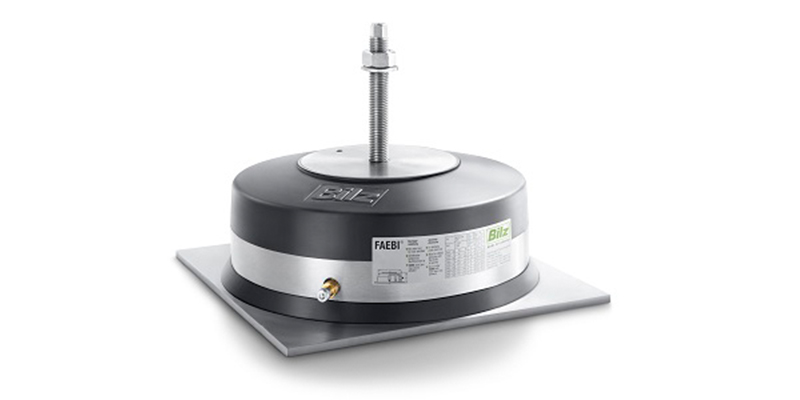

Among the various types of anti-vibration support, air springs are one of the most popular, due to their versatility. As a pneumatic device, air springs can be used with or without a level control system. Generally, air springs are deployed when better isolation efficiency is needed. With the use of a level control system, air springs can easily be adapted to fit an application with moving masses and dynamic forces and automatically return the machine to level.
How air springs work: Pressurized air is sealed by either a fully rubber molded air spring or a metal bodied air spring with fabric reinforced rubber membrane. The air spring can lift the load applied to it based on the effective piston area and the air pressure applied to it. Air springs are designed to operate at pressures from 20 to 60 PSI. Air spring systems only lift the machine just a little over ¼ inch, just enough to allow it to float.
Where air springs are best applied: Air springs not only work to provide vibration isolation from shock and vibration created by a machine, but can also serve reduce shock and vibration that could be received by a machine sensitive to vibration. For machines that create shock and vibration, they work similar to a shock absorber, they soak up and diminish movement in such active mechanisms as high-speed presses, forging hammers, turret punching machines, vibration welders, engine dynamo meters test stands, and machines or assemblies with high dynamic disturbance forces, aka strong action. For machines that are adversely affected by floor vibration, the reduce the vibration amplitudes that are received and allow these machines to work within their specified accuracy, CMM’s, Surface Finish Measuring Machines, Roundness testers, Diamond Turning Lathes, etc.
How air isolation and leveling differ: The typical air spring system will also require some type of mechanical leveling. While the final leveling of the machine can be fine-tuned using the air springs the initial leveling must be done with the air springs deflated. The reason for this is that all the air springs in the system must be to roughly the same height. The initial mechanical leveling can be done with shim plates, adjustable leveling feet or leveling wedges.
When an air spring is needed: If simple, low cost rubber isolation pads are not providing adequate isolation performance, the next logical step is an air spring isolation system. For machines that create shock and vibration the air spring will absorb and dissipate far more energy that the simple rubber isolation pad. This minimizes the shock and vibration transferred into the floor that can affect people and other machines nearby. For the highly accurate measuring machine it can make the difference between the machine measuring to within specification or providing erroneous measurements.
Where air springs excel: Precise level control is another realm in which air springs are ideal. Because machine specs have grown ever more precise, absolutely exact level is a frequent requirement. Especially in machines where the work piece is automatically loaded by a robot, systems using air springs can be leveled to very tight tolerances to support exact measurements for machine operation, whether for laser cutting or a measuring probe deployed to ensure a machine operates within the specs set by the manufacturer. In addition, rigorous measurements are often required in the case of government, military, or other contract types; without accuracy, the quality of production inevitably suffers.
{{cta(‘b8d1001a-9d83-407f-91d9-924b0e200dbd’,’justifycenter’)}}